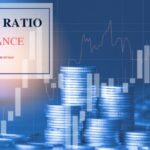Dividend Yield: Everything you need to know about
What exactly is a Dividend?
A dividend is a percentage of a company’s profits distributed to its shareholders. Dividends are more typical in established businesses that can afford not to reinvest all of their revenues.
Dividend payments, unlike bond interest payments, are not guaranteed. When the economy is bad, companies may reduce or even abolish dividends.
What is Dividend Yield?
The Dividend Yield is a financial ratio that compares the yearly value of dividends paid to the market value of a security per share. In other words, the dividend yield formula computes the proportion of a company’s market price per share that is given to shareholders as dividends.
How to Calculate Dividend Yield? – Dividend Yield Formula
Calculation of Dividend yield can be done easily by using the Dividend Yield Formula. The Dividend Yield Formula is given below.
The Dividend Yield Formula:
Where:
- The Dividend per share is the entire yearly dividend payment divided by the total number of outstanding shares.
- Market value per share represents the company’s current share price.
Dividend Yield: An Overview
The dividend yield is an indication of a stock’s dividend-only performance. In general, older corporations with slow growth provide the greatest dividend yields. New enterprises that are tiny yet expanding fast may pay a smaller average dividend.
Consumer non-cyclical firms that sell staples or utilities are examples of whole industries with the highest average yield.
Technology equities have a smaller dividend yield than the average, but the same rule that applies to mature firms also applies to the technology sector.
For example, Qualcomm Incorporated (QCOM), a well-known telecommunications equipment company, has a trailing twelve months (TTM) dividend of $2.63 as of June 2021. On August 17, 2021, at its stock price was $144.41, its dividend yield would be 1.82%. Square, Inc. (SQ), a relatively recent mobile payments processor, does not pay any dividends.
Dividends from real estate investment trusts (REITs), master limited partnerships (MLPs), and business development companies (BDCs) often have exceptionally high dividend yields since the US Treasury compels them to distribute the bulk of their profits to their shareholders. This is known as a “pass-through” mechanism, and it implies that the firm is exempt from paying income taxes on earnings distributed as dividends. The shareholder, on the other hand, must regard dividend payments as ordinary income and pay taxes on them.
What Is the Importance of Dividend Yield?
The fundamental purpose of understanding dividend yield is to assist you in determining which stocks provide the best return on your dividend investment dollar. But there are a few other benefits to consider.
1) Dividend yield makes stock comparison simple
2) Dividend yields that are increasing indicate financial health
3) Dividends increase your returns
Dividend yields make stock comparisons simple
If you’re looking for income, compare and pick companies depending on those that provide the greatest dividend per dollar invested. Because firm’s stock values change so significantly, the absolute dividend amount you get per share is a less useful indicator.
Dividend yields that are increasing indicate financial health
If a firm chooses to increase its payout — and hence its dividend yield — this often indicates that the company is doing well because it can afford to distribute more of its income to shareholders.
In general, older, more mature firms in established sectors pay regular dividends and provide higher dividend rates. Meanwhile, newer, faster-growing firms choose to reinvest their income in order to develop rather than pay a dividend.
Dividends increase your returns
Your investment benefits from compounding when you reinvest your dividends rather than cashing them out every year or quarter. Compounding effects can significantly boost your earnings over time.
According to a recent Hartford Funds analysis, reinvested dividends have accounted for 78% of the total gains of the S & P 500 since 1970.
High Dividend Yields have Risks
A high dividend yield isn’t necessarily a good thing. In fact, an unusually high yield might be a red indicator. This might happen for a variety of reasons, including:
- The stock price of the firm has just collapsed. If a stock’s price has dropped dramatically but the dividend hasn’t been slashed yet, the yield may look to be high. Consider a business with a stock price of $60 and a $2 yearly dividend per share. If its price falls below $20, its dividend yield nearly triples to over 10%. This yield may appear to be quite attractive at first sight, but upon closer inspection, it indicates that the firm is in peril because its share price has decreased dramatically. This suggests that a dividend cut or removal is on the way.
- If a company is aiming to attract new investors by paying a high dividend yield, some investors may purchase shares, causing the stock price to rise. However, if the firm isn’t financially sound and can’t afford to continue the larger dividend payments, this dividend payout may not persist. With this in mind, it may make sense to seek firms with lower but consistent dividend yields than to invest in exclusively high-dividend corporations.
Dividend Yielding Stocks
If you’re seeking high dividend yields, consider dividend aristocrats, which have regularly increased
their distributions over decades, as well as companies in the following industries:
Utilities
Consumer goods
Tele-communications
Energy
Property Ownership
a) Utilities
Electricity and water companies, in general, pay out large, reliable dividends. Even natural gas companies have historically paid out quite substantial and consistent payments.
b) Consumer Goods
Consumer staple companies frequently have long-standing dividend schemes. Many dividend aristocrats are consumer staples firms.
c) Telecommunications
Companies that provide telephone and internet services frequently pay their large profits as dividends.
d) Energy
Energy companies frequently pay out bigger dividends. This is due in part to the fact that many are Master Limited Partnerships (MLPs), which must distribute all earnings to shareholders in order to preserve their tax-favoured status.
e) Property ownership
Real Estate Investment Trusts (REITs), like MLPs, must pay practically all of their revenues to shareholders as dividends to maintain their tax status. This might result in dividend yields that are significantly greater than the norm.
Advantages and Disadvantages of Dividend Yields
Like Dividends have some benefits it also has some drawbacks. As an investor and a shareholder, you should know its advantages and disadvantages. The Pros and Cons of Dividend Yields are listed and discussed in Table 1.
Table 1: Advantages & Disadvantages of Dividend Yield
|
Pros of Dividend Yields |
Cons of Dividend Yields |
|
Historical data implies that focusing on dividends may enhance rather than delay returns.
|
When examining a firm that appears troubled and has a higher-than-average dividend yield, investors should proceed with caution.
|
|
Dividends, for example, have accounted for 84% of the overall gains on the S&P 500 since 1970, according to Hartford Funds analysts.
|
Dividend statistics may be outdated or based on incorrect information. As their stock price falls, many corporations have a very high yield.
|
|
This assumption is based on the idea that investors are likely to reinvest their dividends back into the S&P 500, which increases their capacity to earn future dividends.
|
If a company’s stock falls sufficiently, the amount of its dividend may be reduced or eliminated entirely.
|
Dividend Payout Ratio vs Dividend Yield
- When comparing corporate dividend metrics, keep in mind that the dividend yield indicates a straightforward rate of return in the form of cash dividends to shareholders.
- The dividend payout ratio, on the other hand, reflects how much of a company’s net earnings are paid out as dividends.
- While the dividend yield is the more generally used phrase, many feel the dividend payout ratio is a stronger predictor of a company’s capacity to regularly provide dividends in the future. The dividend payout ratio is inextricably linked to a company’s cash flow.
- The dividend yield displays how much a firm has paid out in dividends over a year. The yield is given as a percentage rather than a monetary figure. This makes it easy for the shareholder to evaluate how much return they may expect per dollar invested.
Frequently Asked Questions (FAQs)
Are Dividends profitable?
Dividends are often a portion of a company’s profit that it distributes to its shareholders. After
paying its creditors, a firm might utilize a portion or all of its remaining earnings to pay
dividends to its shareholders.
What constitutes a healthy dividend yield?
Dividend yield may assist investors to assess the possible return for every dollar invested as well as the dangers of investing in a specific firm. A healthy dividend yield fluctuates based on market conditions, but a return of 2% to 6% is regarded as excellent.
In a Nutshell – Dividend Yield
- The dividend yield, expressed as a percentage, is the amount of money paid to shareholders for owning a share of a company’s stock divided by the current stock price.
- Dividends are most likely to be paid by mature enterprises.
- Utility and consumer staple companies frequently have greater dividend yields.
- Real estate investment trusts (REITs), master limited partnerships (MLPs), and business development corporations (BDCs) pay bigger dividends than normal companies. Nevertheless, these payouts are taxed at a higher rate.
- Investors must remember that greater dividend yields do not always imply appealing investment possibilities because a firm’s dividend yield may be rising as a result of a dropping stock price.





